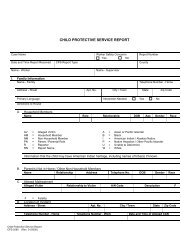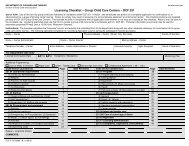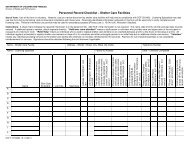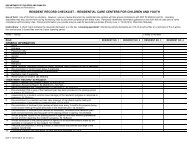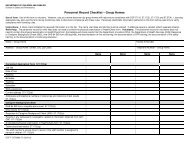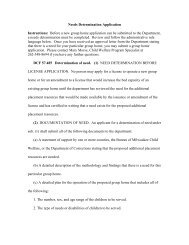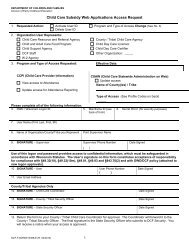Child Welfare
Racial Disproportionality Recommendations Presentation
Racial Disproportionality Recommendations Presentation
- No tags were found...
Create successful ePaper yourself
Turn your PDF publications into a flip-book with our unique Google optimized e-Paper software.
Racial Disproportionality in<strong>Child</strong> <strong>Welfare</strong>Secretary’s Council on <strong>Child</strong> <strong>Welfare</strong>June 16, 2010
Guiding Principles• Neither race nor ethnicity will predict a child’s pathwaythrough or outcome in Wisconsin’s child welfare system;• Safe environments are needed to encourage and promoteopen and honest dialogue;• Data will be used to guide the conversations; it isimportant to also discuss the stories behind the data;• The safe reduction of children of color createsopportunities for learning and improved outcomes for allchildren and families.
DataBased on the data that is available, the followingdecision points have the highest levels ofdisparity in 2007.African American American IndianReport 2.97 3.60Screen – in 1.34 .91Removal 1.41 1.20
Goal - Racial/Ethnic Equity• Racial/Ethnic Equity occurs when thedistribution of society’s resources,opportunities, and burdens are not predictableby race or ethnicity and when race/ethnicitycan no longer be consistently associated withthe incidence of privilege and disadvantage.
Recommendations1. Leadership Commitment• Set goals• Legislative Support• Statewide Summit2. Community Engagement3. Regional Work Groups4. Data• Additional Analysis• Performance Management• Cross systems• Informed by stories
Recommendations continued5. Decision Points• Report• Screen-in• Removal• Permanency6. ICWA Codification7. Remediation Action Plan
Conclusion• We must be more explicit, consistentand insistent about reducing racialdisproportionality in Wisconsin.



